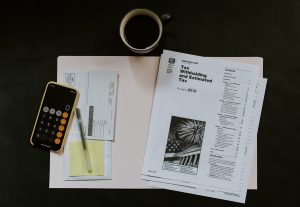Priority Debts in No-Asset Cases
Priority debts in no-asset cases will remain largely unaffected—the bankruptcy will not likely discharge the debts, so you need to pay them after finishing your case.

Photo by Kelly Sikkema on Unsplash
Most Bankruptcies are No-Asset Cases
Chapter 7—“straight bankruptcy”—is the most common type of consumer bankruptcy case. They are generally the most straightforward, lasting about 4 – 6 months from start to finish. Usually, property exemptions protect everything you own. You discharge or legally write off all or most of your debts. If you do not retain and reaffirm your secured debts like a home mortgage, you will also discharge these debts. You either keep the collateral and pay for it, or surrender it and discharge any remaining debt. Bankruptcy does not discharge certain special debts like child/spousal support and recent income taxes.
A “no-asset” Chapter 7 case is one, as described above, in which property exemptions cover everything you own. So you keep everything you own (with the exception of collateral you decide to surrender). It’s called a no-asset case because your Chapter 7 trustee does not get any assets to liquidate and distribute to any of your creditors. The trustee just verifies that you have no unprotected assets. He or she does this mostly by reviewing your bankruptcy documents and asking you some simple questions at your hearing. A large majority of Chapter 7 cases are no-asset ones. Your bankruptcy lawyer will help you with analyzing your case.
Although Chapter 7 is theoretically a liquidation form of bankruptcy, in a no-asset case there is nothing to liquidate. You lose no assets, and you lose all or most of your debts.
What Happens to Your Special, Priority Debts in a No-Asset Case?
Yes, what about debts that do not qualify for discharge? There are various types of such debts, although most cases have either only one or two not-discharged debts or none at all.
Priority debts are typically the most common nondischargeable debts in Chapter 7. Priority debts are those debts that Congress treats with a higher priority. In consumer cases, the most common priority debts are child/spousal support and recent income taxes. See the U.S. Bankruptcy Code subsections 507(a)(1) and (8). (Not to go into the rules here, but many older income taxes are not a priority debt and can be discharged.)
Priority debts are generally paid before other debts in a bankruptcy. This is true in an asset Chapter 7 case—where the trustee is liquidating a debtor’s assets. In fact, the trustee must pay a priority debt in full before paying regular (“general unsecured”) debts a penny!
But in a no-asset Chapter 7 case, the trustee has no assets to liquidate. So he cannot pay any creditors anything, including any priority debts. So, essentially nothing happens to a not-dischargeable priority debt in a no-asset Chapter 7 case.
Dealing with Priority Debts During and After a Chapter 7 Case
However, one benefit you receive with some priority debts is the “automatic stay.” This stops (“stays”) the collection of debts immediately when you file a bankruptcy case. This “stay” generally lasts approximately 4 months, which is the length of time that a no-asset case is usually open. This no-collection period gives you time to make arrangements to pay a debt that is not going to get discharged. So you can start making payments either towards the end of your case or as soon as it’s closed. The hope is that you’ve discharged all or most of your other debts so that you can now afford to pay the not-discharged one(s).
The automatic stay applies to most debts, but there are exceptions. Child/spousal support is a major exception. Filing a Chapter 7 case does not stop the collection of support, either unpaid prior support or monthly ongoing support. (Note that Chapter 13 “adjustment of debts” can stop the collection of unpaid prior support under most circumstances.)
So during your case, you and your bankruptcy attorney can make arrangements to begin paying the nondischargeable priority debts that the automatic stay applies to. You need to be prepared to immediately deal with the debts in which the automatic stay does not apply.
If neither of these makes sense in your situation, consider filing a Chapter 13 case instead. Talk with your Kalispell bankruptcy lawyer about the advantages and disadvantages of each option. Chapter 13 takes a lot longer—from 3 to 5 years usually. But if you have a lot of priority, secured or any other nondischargeable debts, it can really help.